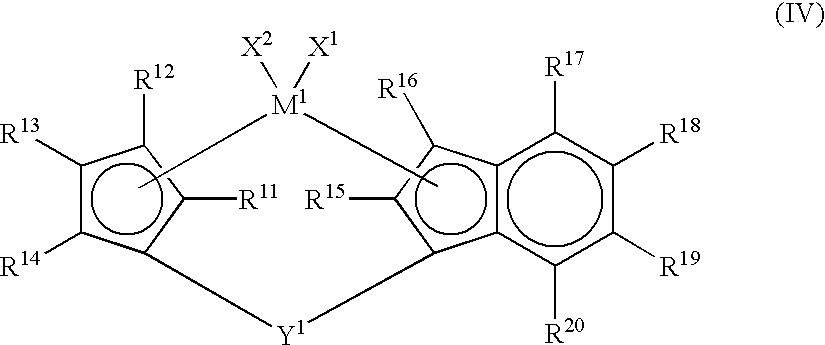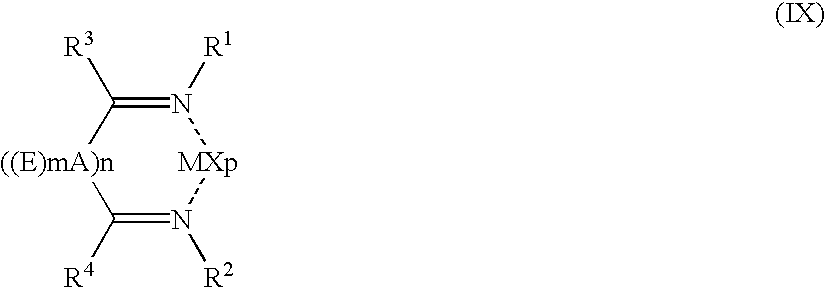Process for producing olefin polymer and olefin polymers
a technology of olefin polymer and olefin polymer, which is applied in the direction of physical/chemical process catalysts, organic compound/hydride/coordination complex catalysts, physical/chemical process catalysts, etc., can solve the problem of unfavorable results and achieve high polymerization activity and high polymerization activity
- Summary
- Abstract
- Description
- Claims
- Application Information
AI Technical Summary
Benefits of technology
Problems solved by technology
Method used
Image
Examples
example 1
A 1.0-liter glass reaction device equipped with a condenser tube and a stirring device, was throughly purged with nitrogen, charged with 400 ml of decane at room temperature, and the temperature of the liquid was then raised to 80.degree. C. using an oil bath. 0.4 millimoles of triisobutylaluminum and 0.05 millimoles of diethylzinc were then charged into the reaction device. A, catalyst was prepared by priorly stirring and contacting for 10 minutes together 0.5 millimoles of methylalumoxane (10 weight % toluene solution; made by Tosoh Aczo Co., Ltd.) and 0.0005 millimoles of dimethylsilylene(2-methyl-4,5-benzo-1-indenyl)(2,7-di-t-butyl-9-fluorenyl)zirconium dichloride (shall be referred to hereinafter as "compound A") at a molar ratio of 1000, in toluene, and this catalyst was added to the reaction system. Ethylene and hydrogen were then fed continuously at rates of 100N-liter / hr and 1N-liter / hr, respectively, to carry out polymerization at 80.degree. C. for 30 minutes. After the co...
example 2
Ethylene was polymerized in the same manner as in Example 1, except that hydrogen was fed at a rate of 2N-liter / hr. As a result, an ethylene polymer having an MI of 3.6 g / 10 minutes was obtained. The yield of the ethylene polymer was 7.8 g and the polymerization activity was 31.2 kg / millimole Zr.hr.
example 3
Ethylene was polymerized in the same manner as in Example 1, except that diethylzinc was added in an amount of 0.5 millimoles. As a result, an ethylene polymer having an MI of 96 g / 10 minutes was obtained. The yield of the ethylene polymer was 4.5 g and the polymerization activity was 18 kg / millimole Zr.hr.
PUM
| Property | Measurement | Unit |
|---|---|---|
| contacting temperature | aaaaa | aaaaa |
| contacting temperature | aaaaa | aaaaa |
| contacting temperature | aaaaa | aaaaa |
Abstract
Description
Claims
Application Information
 Login to View More
Login to View More - R&D
- Intellectual Property
- Life Sciences
- Materials
- Tech Scout
- Unparalleled Data Quality
- Higher Quality Content
- 60% Fewer Hallucinations
Browse by: Latest US Patents, China's latest patents, Technical Efficacy Thesaurus, Application Domain, Technology Topic, Popular Technical Reports.
© 2025 PatSnap. All rights reserved.Legal|Privacy policy|Modern Slavery Act Transparency Statement|Sitemap|About US| Contact US: help@patsnap.com



